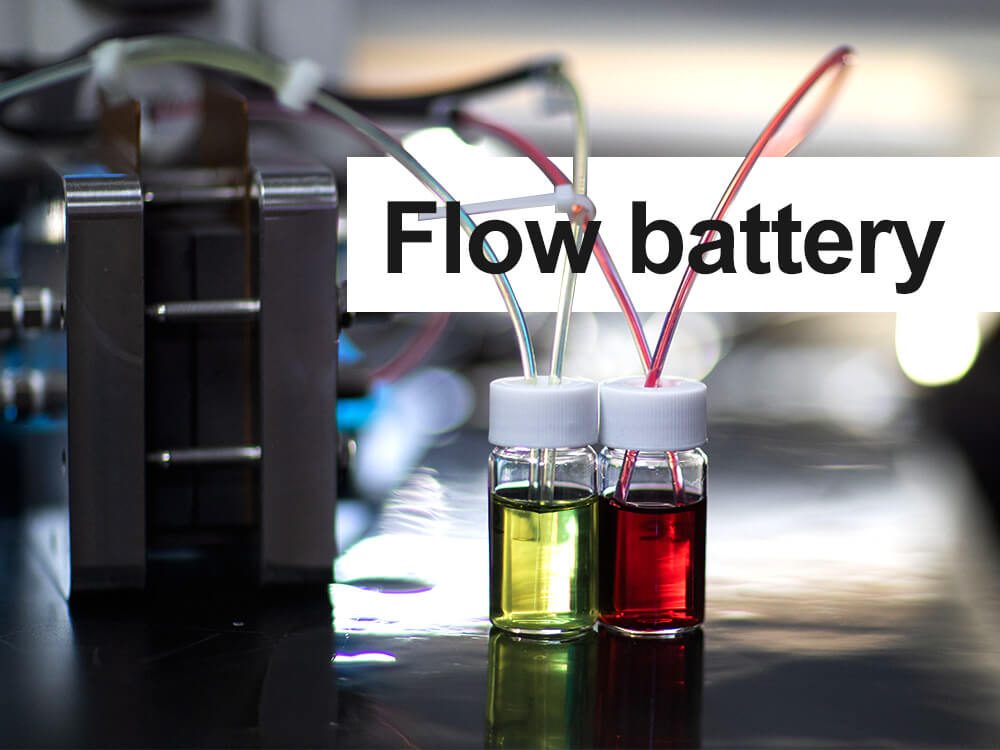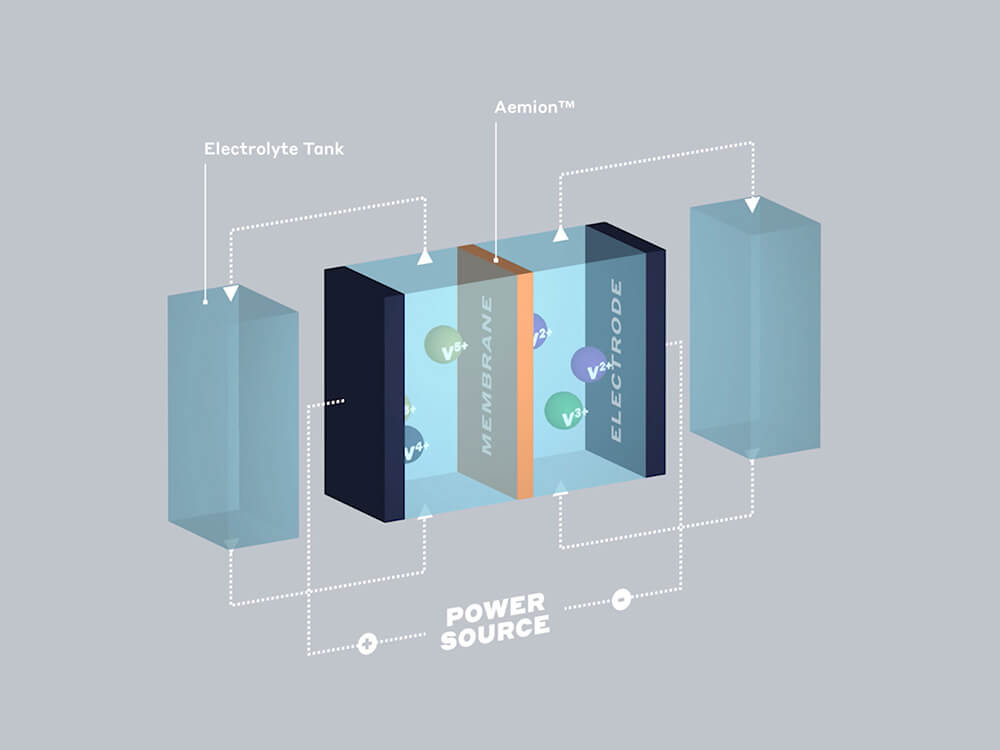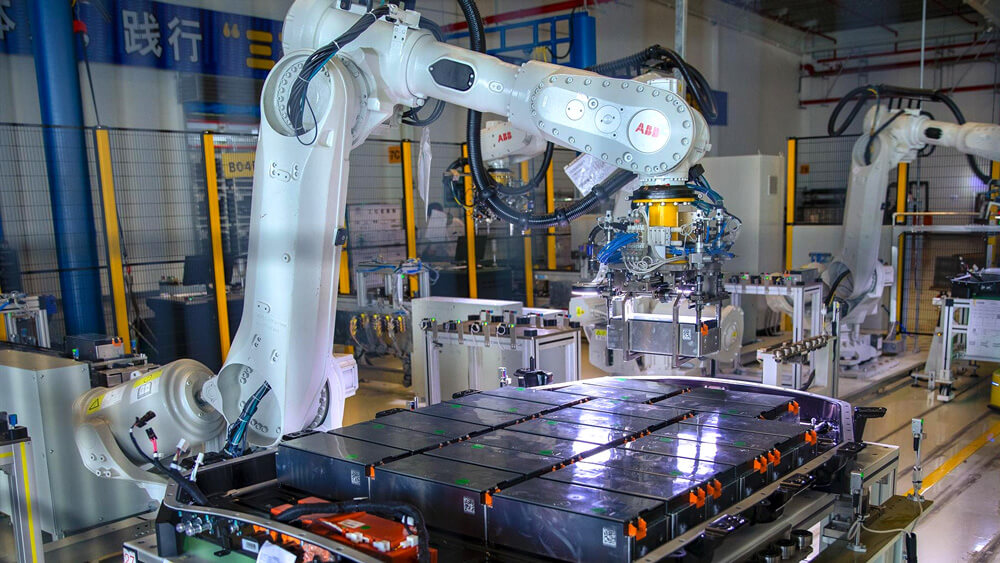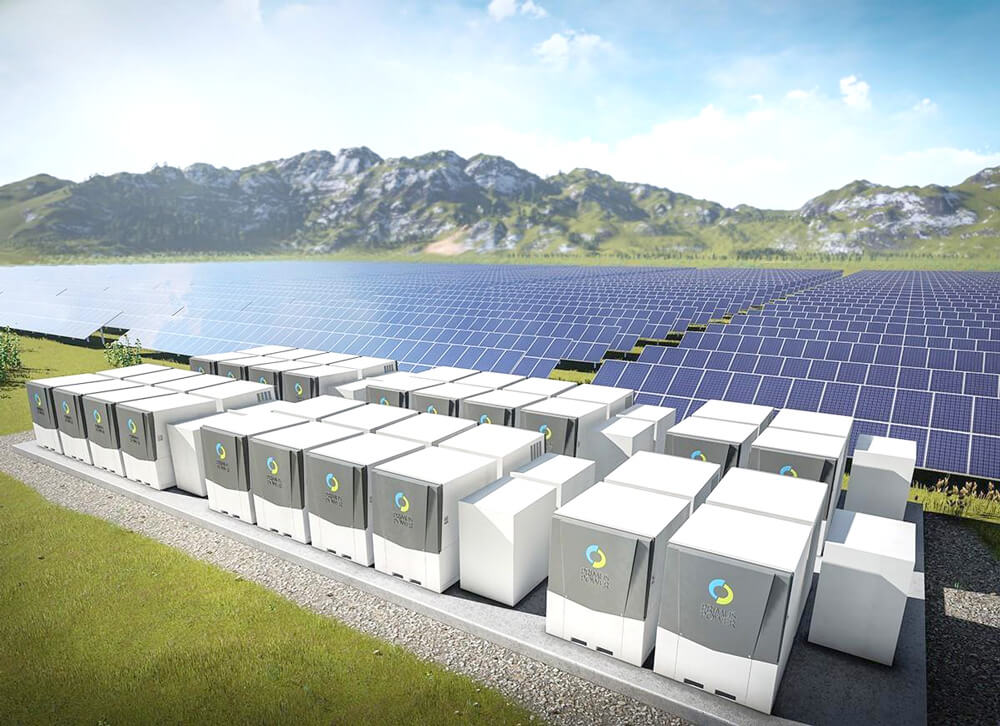Home » battery news » The installed capacity of flow battery is expected to achieve double growth
The installed capacity of flow battery is expected to achieve double growth
Since 2021, prices of the upstream raw material of lithium-ion battery is increasing and there is also a shortage of capacity, exposed the risk of over-reliance on a single technical route:
The rapid release of downstream demand for lithium batteries has led to the rise of upstream prices and the shortage of capacity supply, resulting in the situation that energy storage and electric vehicles, two-wheelers and smart home and other downstream to grab the battery and raw material. In addition, problems such as short life of lithium battery products, fire and explosion also affect the application of lithium battery energy storage products.
In July 2021, China issued a file that insist on diversified energy storage technology, promote the flow battery and other long – term energy storage technology into the initial stage of commercial development,the policy spring of new energy storage batteries such as flow batteries is gradually coming.
- Long-term energy storage: flow battery will become the new demand
- Other advantages of flow battery: high safety and stability, environmentally-friendly
- Flow battery market review since 2020: the number of signed projects reached a new high
- The proportion of lithium battery energy storage will decline and that of flow battery will increase
Long-term energy storage: flow battery will become the new demand
On October 26, The State Council of China issued an action plan for carbon peak by 2030, proposing that the installed capacity of new energy storage should reach over 30 million kilowatts in 2025, 10 times the amount of new installed capacity in 2020, with an average annual growth rate of 58%.
In this rega,in 2020, China’s new electrochemical energy storage is 1.5G watts; Another 120 gigawatts of pumped storage will be added, and 1.5 gigawatts of pumped storage will be added in 2020. Thus the energy storage target is more than double what some industry authorities had predicted. At present, China’s wind power, solar power, water power, nuclear power generation technology has been very mature, the bottleneck is energy storage. So this is a really big year for the energy storage market.
Previously the time of energy storage is generally requires 2 hours in China, but in order to truly achieve the “dual carbon goal”, it must achieve long-term energy storage. This year China Southern Power Grid’s energy storage planning has required more than 8 hours of energy storage, so as to really play a role in the grid. In the future, the power supply system will operate according to the mode of new energy + new energy storage, and energy storage will become the market demand.”
The flow battery can store and release electric energy by converting ions from different battery electrolyte to each other. Compared with the traditional secondary battery, the electrode reaction process has no phase change, can carry out deep charge and discharge, and can withstand high current charge and discharge.
Compared with other electrochemical energy storage technologies, the most prominent feature of the flow battery is its long cycle life, which can reach the minimum of 10,000 times, and some technology routes can even reach more than 20,000 times, and the overall service life can reach 20 years or more.
Other advantages of flow battery: high safety and stability, environmentally-friendly
The energy storage active substance and electrode of flow battery are completely separated, and the power and capacity design are independent of each other, which is convenient for module combination design and battery structure placement. The electrolyte stored in the storage tank will not self-discharge; The reactor only provides a place for electrochemical reaction and does not REDOX reaction itself.
The risk of electrode dendrite growth piercing diaphragm is greatly reduced in the flow battery. At the same time, the flow of electrolyte can take away the heat generated by the battery charging/discharging process, to avoid the damage and even combustion of the battery structure caused by the battery heating; Finally, the electrolyte of the flow battery can be recycled, which does not pollute the environment compared to lead-acid storage batteries.
According to the product classification, the flow battery can be divided into different technical routes such as vanadium, chromium iron, zinc and bromine according to the different electrolytic liquid system.
All vanadium flow battery is the most mature commercial flow battery route. First of all, after years of demonstration and assessment, the engineering effect of large-scale energy storage of all-vanadium flow battery has been fully verified. Other routes still need to undergo a long verification cycle due to the short demonstration time.
Compared with iron and chromium and other technical routes, the supply chain of raw materials such as electrolyte, diaphragm and membrane electrode of vanadium flow battery has taken initial shape, and the localization process has been accelerating. It has been able to support the design and development of hundred-megawatt projects, and its industrial supporting facilities are more mature.
Finally, the all-vanadium flow battery system (10MW- 4-hour storage configuration) has been able to control the cost per watt-hour to 2-3 RMB, which is ready for initial commercial application. Although iron-chromium flow and other routes have greater space for cost reduction, the maturity and cost level of other flow battery routes in the next five years are still difficult to match that of all-vanadium flow battery from the perspective of technological bottleneck breakthrough, industrial chain cultivation and capacity construction progress.
Comparison of flow battery and other electrochemical battery technologies. To sum up, flow battery is more suitable for large-scale and long-term energy storage battery technology route. From the maturity of the industry, vanadium all-flow battery will be the mainstream flow battery technology in the next five years. With the rapid increase of installed scale, the advantages of flow battery’s energy storage performance will become more prominent.
Flow battery market review since 2020: the number of signed projects reached a new high
On the demand side, the current proportion of the installed capacity of flow battery electrochemical energy storage is low, which is less than 1% in both the world and China. However, since 2018, the number of projects signed and installed by the flow battery has reached a new high, and the market heat has increased significantly.
Take China as an example. According to incomplete statistics, from 2020 to 2021, the planned installation capacity of liquid flow batteries in China exceeds 6GW and the capacity exceeds 20GWh. It is expected that this batch of projects will be put into operation intensively from 2022 to 2023, and the overall scale will double from 2021, which is expected to bring huge order demand for the domestic flow battery market.
Global Flow Battery Installation Growth (MWh), 2010-2020
At present, the market size of flow battery is small, and the overall competition pattern has not been fully opened. Dalian branch and Beijing puneng engaged in flow battery for a long time, depending on its electric reactor products iterative ability, supply chain integration ability and MW grade flow battery project design temporarily operational ability, they are in the leading position in China. However, with the addition of other new entrants and the completion of expansion projects, there will still be great changes in the future market competition pattern.
From the technical point of view, flow battery is most criticized for its low energy density and high production cost. In order to promote the widespread application of flow battery energy storage technology, it is necessary to improve the power density, energy density and conversion efficiency of the reactor to another level, so as to reduce the cost of the battery, improve its reliability and stability, which is the development consensus reached by the industry.
In the next five years, the product technology development of flow battery will focus on four aspects: numerical simulation of reactor structure design, more efficient and low-cost reactor raw materials, high power density reactor development and electrolytic liquid system innovation.
The proportion of lithium battery energy storage will decline and that of flow battery will increase
Energy storage is mainly divided into pumping energy storage and electrochemical energy storage. Electrochemical energy storage mainly includes lithium ion battery, lead acid battery and flow battery.
According to statistics, pumped energy storage accounted for 89% of China’s accumulated installed energy storage capacity by the end of 2020, down four percentage points from 2019. Electrochemical energy storage accounts for 11%, of which 89% are lithium-ion batteries, lead batteries account for about 10%, and liquid flow batteries only about 0.7%.
Lithium-ion batteries accounted for 97 percent of new electrochemical storage capacity in 2020, but that growth is likely to decline due to safety concerns. Especially since April this year, the overall market has shifted to flow batteries.
It is recognized around the world that flow batteries are the main way to achieve long-term energy storage. In order to increase the storage time of lithium ion battery, the electrode thickness must be increased, and the resistance will be flammable and explosive. In addition, the cost will increase exponentially in order to realize the storage for 4-8 hours.
However, lead batteries (including lead-acid and lead-carbon batteries) have poor cycle life and low market acceptance. In contrast, the flow battery can only increase the scale of energy storage by adding the electrolyte, and the electrolyte can also be semi-permanently recycled, which has obvious advantages in the energy storage market and cost.
The expert forecasts that the capacity of flow batteries could reach 150 megawatts in 2021, up from 3 megawatts in 2020, accounting for about 10 per cent of new electrochemical energy storage capacity this year. Previously, the decline in the ratio of liquid flow batteries was mainly due to the unstable price of raw material vanadium, which rose from more than 30,000 yuan/ton to about 540,000 yuan in 2019, which was difficult for the production link to bear.
And vanadium prices in the past two years declined, vanadium pentoxide is basically stable at the normal level of 100,000 yuan/ton, so the future development will be better and faster. The flow battery, especially the full vanadium flow battery, will gradually increase from the current about 10% to 30%~40% of the scale.
For investors concerned about the flow battery cost reduction space, Tsinghua University flow battery engineering Research Center Director Wang Baoguo said, “with the development of self-research technology, the price of flow battery will be 20,000 / KWH, gradually reduced to about 12,000. In the future, the price of flow battery can reach 3000-3500 yuan/KWH, or even lower, in the range of installed capacity of 1,000 to more than 100,000 degrees.”
By increasing the circuit density of the reactor, he thinks it has at least 40% more room to cut prices. As the technology develops, the price of the electrolyte may drop to 900-1,100 yuan per kilowatt-hour. If all the key materials achieve the predicted cost reductions, the installed cost of flow batteries can be about the same as or slightly higher than lithium batteries, but flow batteries have an absolute advantage in safety and longevity.
As for the installed proportion of future energy storage application scenarios, by the end of 2020, the proportion is roughly 47.5% on the power side (electrochemical installed power side), 17.9% on the grid side and 34.6% on the user side. From the installed capacity in 2020, energy storage is mainly developing towards the power supply side. Last year, 71 percent of new installations were installed on the power supply side, 12 percent on the grid side and 17 percent on the consumer side.
In the future, the grid side and the power supply side will be difficult to distinguish. At present, the national demonstration project approved by the Energy Bureau has the functions of amplitudemodulation, frequency modulation, peak modulation, new energy access, standby power supply, emergency power supply and other functions to build the power station together.

























